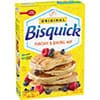While having Italian roots, Chicken Parmesan won’t be found on tables in Italy. Most likely evolving from the Italian eggplant Parmesan (parmigiana de melanzane, which means made with Parmesan), borrows the classic preparation of eggplant--where eggplant is battered and sautéed, then simmered in tomato sauce and covered in a melty blanket of cheese--and applies it to chicken breasts.
Frequently appearing on Italian restaurant menus in the U.S., chicken parm (the frequently shortened name), can lead you to think it’s complicated to make. It’s actually deceptively easy! From start to finish, this impressive and flavorful chicken dish takes only 25 minutes to get on the table. This versatile skillet masterpiece is terrific, no matter what the occasion. Make it for a special dinner, like a date night at home, an anniversary, or even a birthday dinner. Or when you’re looking for a comforting meal on a hectic weeknight, it’s a terrific choice in terms of time to make it and the finished taste.
How to Make Chicken Parmesan
See how easy it is to make this family-favorite recipe. Refer to the recipe for all the details that will help you make this restaurant-worthy dish:
Coat the Chicken
In a shallow dish or pie plate mix the 3 simple dry coating ingredients, Bisquick, Italian seasoning, and Parmesan cheese. In a separate dish add your beaten eggs. Make sure your dishes will allow the chicken breast to lay flat. This ensures the entire piece will get coated without any bare spots. Now that your bowls are ready, triple dip the chicken. Dip each chicken piece in the dry coating, then the egg, and back to the dry coating. This method ensures a nice thickness of coating on your chicken.
Cook the Chicken
Start with a nonstick skillet. We found during our testing that it’s a lot easier to keep the coating on the chicken (and not sticking to the pan) if you use a nonstick skillet over a regular one. Just heat a thin layer of oil in the bottom of the pan before cooking the chicken. Cook it uncovered until it’s golden brown on both sides. This will set the crust on the chicken. Then cover the pan and continue to cook the chicken until it tests done with an instant-read meat thermometer inserted in the thickest part of the chicken breasts. Check a few pieces, as sometimes they cook at different rates, based on where they are in the pan and over the heat of your cooktop. Remove chicken to a plate.
Simmer in the Pasta Sauce
Add the pasta sauce to the same skillet. Place the cooked chicken on top of the sauce and sprinkle it with the cheese blend. Cover and cook the chicken until the sauce is bubbly and the cheese is melted.
Serve it Up
To serve the chicken, lift it onto serving plates using a slotted spatula or spoon. Spoon the remaining sauce in the skillet over the chicken and enjoy.
Chicken Parmesan Ingredients
Check out what each of the chicken Parm ingredients brings to the dish:
Bisquick Mix: This all-in-one mix includes flour, seasoning, and fat to create a crust with great flavor and texture.
Italian Seasoning: A blend of herbs that may include favorites such as basil, mint, oregano, rosemary, and thyme as well as other herbs. It adds flavor to the coating in just one seasoning.
Parmesan Cheese: The dish’s namesake, Parmesan cheese adds a distinctive sharp, rich flavor and saltiness to the chicken coating. Yes, this is the same cheese that is grated over many pasta dishes
Egg: The unassuming powerhouse is what lends its protein to help bind the Bisquick dry coating to the chicken.
Chicken Breasts: Boneless skinless chicken breasts are used for this recipe as the entire piece is edible (no bones or skin to remove). The called for 4 oz pieces are fairly small. If your grocery store only has large breasts, just cut them in half to get them to the correct size. It’s important to use the correct size since the amount of coating ingredients and cook times are based on 4-oz pieces.
Oil: Either regular olive oil or vegetable oil can be used to cook the chicken and keep it from sticking to the pan. Olive oil has a slight olive flavor that will transfer to the chicken or vegetable oil can be used for a clean flavor. Use which ever one you like or have on hand. Extra-virgin olive oil shouldn’t be used, however. It has a lower smoke point, which can cause the chicken to burn before it gets cooked completely through.
Pasta Sauce: We love Muir Glen organic Italian herb pasta sauce for its incredible flavor and homemade taste. The Italian herbs in it add punch to this dish. You can use whatever pasta sauce you have on hand or is your favorite.
Italian Cheese Blend: These shredded cheese products can contain at least 3 types but up to 6 different varieties of Italian cheese. They add that gooey cheesy goodness to this dish while imparting their salty, dairy flavor that goes so well with pasta sauce.
How to Avoid Soggy Chicken Parmesan
You can expect the crust on chicken Parmesan will be somewhat soft—but soggy is a no go. This recipe sautés the chicken (it won’t produce as crisp a crust a deep-frying does). Also, the chicken is simmered in the pasta sauce, which contributes to softening the crust even more. But use these tips for this easy chicken Parmesan recipe, and you can eliminate a sad, soggy coating:
Chicken Breast Size: Larger pieces in this case, don’t equate to better. By using larger pieces, it will be even harder to keep the coating from getting soggy. Once you have a beautifully golden-brown color on both sides, you’ll wind up softening it more than necessary because the chicken is going to need extra time to cook through. Since covering the chicken will produce steam in the skillet, the longer those big pieces have to stay covered to get done, the soggier they are going to get.
Check for Color: Be sure both sides of the chicken are a beautiful golden-brown color before you flip them. If they are only slightly brown, the coating doesn’t have a chance to crisp up enough before the next cooking step.
Serve Immediately: Once the chicken has simmered in the sauce until it’s bubbly and the cheese is melted, be ready to serve this dish immediately. Just like how your fingers get all prune-like when they’ve been in water too long, getting the chicken out of the sauce will help cut the sogginess factor.
What to Serve with Chicken Parmesan
Chicken parmigiana (doesn’t it sound like an upscale Italian recipe, when said this way?) can stand alone as a main dish or you can serve it on a bed of one of the below options to make it even more hearty.
Serve it Over
Spaghetti: Serving it over a bed of cooked spaghetti is the traditional way to serve. You can ladle the sauce on before or after you add the chicken. Chef’s choice!
Mashed Potatoes: Serve the chicken Parmesan over a bed of creamy, dreamy, mashed potatoes for the maximum comfort dish.
Cauliflower Mashed "Potatoes": Using mashed cauliflower for a base is a great way to sneak in extra veggies with your meal without breaking a sweat.
Make it a Meal
Make it a complete meal by adding a veggie, salad, or bread.
Roasted Parmesan Asparagus: Since the chicken has a mild Parmesan flavor, why not pair asparagus that’s oven roasted with even more Parmesan as a pretty and delicious side.
Caesar Salad: This crisp green salad is a match made in heaven. It adds color, texture, and flavor on the plate.
Quick Sour Cream Dinner Rolls: These amazingly easy homemade yeast rolls are also made with Bisquick. They’re ready to devour in just over an hour.
Storing and Reheating Chicken Parmesan
If you’re lucky enough to have leftover skillet chicken Parmesan, it makes a terrific hot lunch the next day. The chicken coating will be soft but will still taste delicious.
Refrigerator Storage
Store the chicken and pasta sauce separately to retain the best texture of the chicken. Place the chicken on a plate and wrap with aluminum foil or plastic wrap. Or place the chicken in a resealable food-storage container. Place the sauce in a separate resealable food storage container. Refrigerate up to 3 days.
Reheating Chicken Parmesan
To reheat sauce, pour it into a glass measuring cup or microwavable cup. Cover and microwave on Medium-High (70%) about 30 seconds or until warm. Let stand on the counter while reheating the chicken.
To reheat the chicken, place a piece on a microwavable plate. Cover loosely and microwave on Medium (50%) about 1 minute or until heated through. Serve sauce over chicken.
Freezer Storage
We do not recommend freezing leftover cooked chicken Parmesan, as the coating will get soggy during freezing, thawing, and reheating.
More Delicious Chicken Recipes
Is chicken for dinner getting a little ho-hum? Give it a flavor ride with a new recipe! Try any of these terrific chicken recipes:
Oven-Baked Chicken Fajitas: A super-easy way to enjoy fajitas without all the fuss of the traditional recipe. It can turn Taco Tuesday into a South-of-the-Border adventure.
Caprese Chicken and Orzo Skillet: This one-pan meal also highlights Italian flavors in a fresh way that’s packed with flavor.
Classic Chicken Pot Pie: Another comforting dinner for chilly nights. Chicken and veggies in “gravy” all tucked inside a flaky crust, irresistible.
Slow-Cooker Chicken Tortilla Soup: A make-ahead dinner that’s soothing and satisfying with spicy Mexican-inspired flavor.
Frequently Asked Questions
Chicken Parmesan
- Prep Time 25 min
- Total 25 min
- Servings 4
- Ingredients 8
Ingredients
- 3/4 cup Original Bisquick™ mix
- 1 teaspoon Italian seasoning
- 2 tablespoons grated Parmesan cheese
- 1 egg
- 4 boneless skinless chicken breasts (4 oz each)
- 3 tablespoons olive or vegetable oil
- 2 cups Muir Glen™ organic Italian herb pasta sauce (from 25.5 oz jar)
- 1 cup shredded Italian cheese blend (4 oz)
Instructions
-
Step1In shallow dish or pie plate, mix Bisquick mix, Italian seasoning and Parmesan cheese. In another shallow dish or pie plate, beat egg. Coat chicken with Bisquick mixture, then dip into egg, and coat again with Bisquick mixture.
-
Step2In 12-inch nonstick skillet, heat oil over medium heat. Add chicken; cook 4 to 6 minutes, turning once, until golden brown. Cover; cook 8 to 10 minutes longer, turning once, until juice of chicken is clear when center of thickest part is cut (170°F). Remove from skillet to plate.
-
Step3Add pasta sauce to skillet. Place chicken on top of sauce. Sprinkle with Italian cheese blend. Cover; cook 2 to 3 minutes or until sauce is bubbly and cheese is melted. To serve, immediately move chicken breasts to serving plates. Spoon any remaining sauce in the skillet over the chicken.
Nutrition
Nutrition Facts
Serving Size: 1 Serving
- Calories from Fat
- 280
- Trans Fat
- 1g
% Daily Value*:
- Vitamin A
- 15%
- 15%








